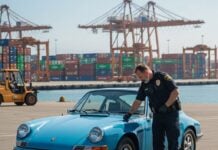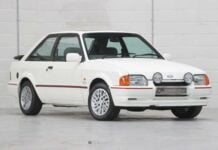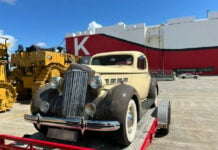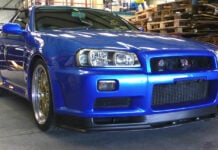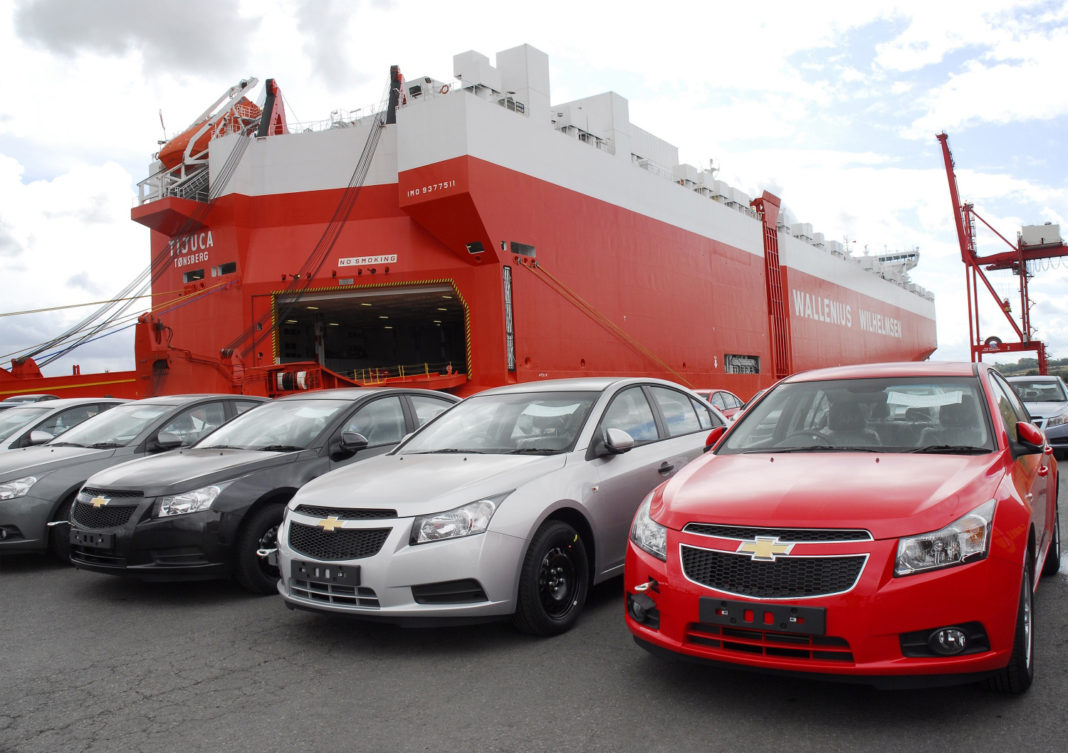Table of Contents
If you take a car overseas using AutoShippers’ services, you’ll have to make a decision as to whether it’s sent using Containerised or Ro-Ro shipping. The first one’s fairly self-explanatory – your car is put inside a standard 20- or 40-foot container. But the term ‘Ro-Ro’ – “roll on, roll off” – might be a new one for a lot of people.
So let’s take a look at what Ro-Ro shipping actually means, its history, the pros and cons of moving cars and other goods this way, and finally the benefits and drawbacks of Ro-Ro versus containerised shipping when it comes to moving your vehicle.
What is Ro-Ro Shipping?
In broad terms, Ro-Ro refers to any form of shipping in which a land vehicle is simply driven onto a boat or ship, rather than being lifted onto it using a crane.
This broad definition includes cargoes such as:
- Cars or tourist coaches using regular passenger ferry services (eg from Dover to Calais);
- Private cars that are being shipped by/for their individual owners;
- Huge fleets of new cars that are being shipped on behalf of automobile manufacturers and retailers;
- Small trucks and lorries laden with goods, and/or articulated lorries with their container cargo in situ.
All of these are forms of Ro-Ro shipping, though for the purposes of this article we’ll concentrate primarily on the movement of private vehicles – that’s what we do!
Ro-Ro Shipping: Early History
Today, the term ‘Ro-Ro’ usually refers to wheeled vehicles – cars and lorries – but the first Ro-Ro vessels were actually built to carry trains.
When the UK’s rail network was being built in the 1830s and 40s, some rivers were too wide to allow the construction of a railway bridge. So river-going craft were constructed that had rails on their decks, enabling a train to be driven onto the boat on one side of the river, and then off again at the other. Essentially, these “train ferries” were large floating, movable bridges, but they laid down the blueprint for the future of vehicular transport.
A good early example was Leviathan, which was built by the Edinburgh, Leith and Newhaven Railway in 1849. The company was building a railway line from Dundee to Aberdeen and needed a way to get trains across the Firth of Forth (a distance of some five miles). They called in engineer Thomas Bouch to solve the problem, and Leviathan was the solution he came up with. Opening in 1850, Leviathan was originally intended only as a temporary solution while a bridge was being constructed – but delays to that project meant the ferry ended up being used for 40 years.
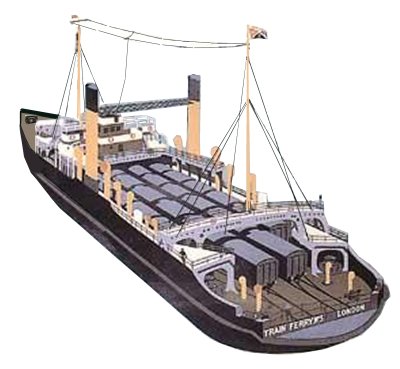

So the train ferry was already well-established by the start of the 20th Century, but it was World War One that would see it really take off, when train ferries were used to transport heavy artillery, military vehicles and later tanks (all loaded onto railway wagons) from England to France. A secret port was constructed specifically for this purpose at Richborough in Kent, and by the end of the war, over 250,000 tons of military cargo were being shipped this way every month. The great advantage of this method was that it required far fewer labourers, which was obviously an issue when so many young men were at the Front.
It wasn’t until World War Two, though, that the first ships specifically designed to carry road vehicles were constructed – in the form of landing craft. Learning the lessons of the Dunkirk evacuation in 1940, military chiefs realised they needed a way of getting tanks, armoured cars, personnel carriers and other vehicles on- and off-shore quickly. The first – designed by Sir Rowland Baker, based on a rough sketch by Winston Churchill himself – was HMS Boxer. This ship went into service in 1941 and could carry 13 tanks, 27 smaller vehicles and 200 troops. Such craft were known as LST’s – the initials standing, somewhat prosaically, for “landing ship, tank”.
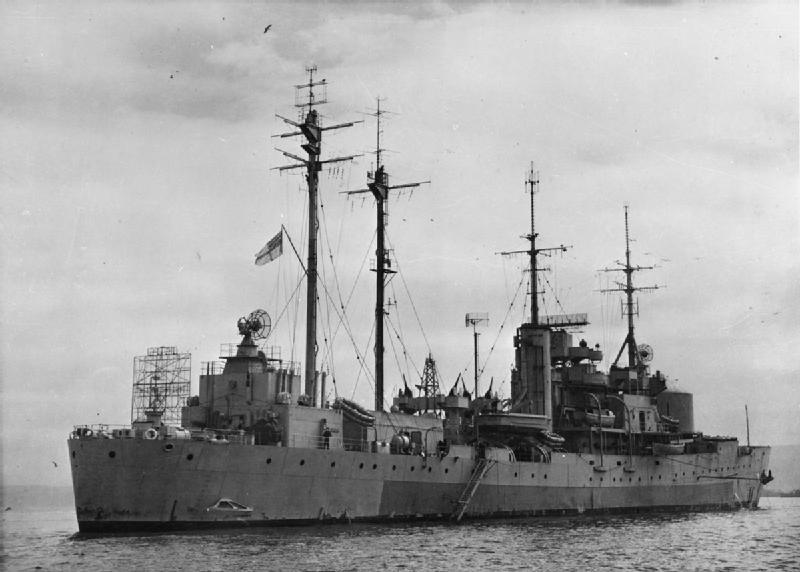

A larger version, built to carry tanks across the Atlantic rather than just the English Channel or the Mediterranean, was then developed jointly by the British and American armed forces. Some 23 of these were built and used during the war – and a few canny entrepreneurial types were quick to spot their commercial potential in the years immediately afterwards.
Ro-Ro Shipping: Post-War History
The most important of these was Lt Colonel Frank Bustard, who in the period between the wars had headed up the Atlantic Steam Navigation Company. In 1946 the British government agreed to lease three LST’s to the Company: LST 3519, LST 3534 and LST 3512 were renamed Empire Baltic, Empire Cedric and Empire Celtic, and the former made its maiden commercial voyage from Tilbury to Rotterdam on 11 September 1946, carrying 64 vehicles that had been purchased by the Dutch government.
Regular routes were soon established linking Great Britain to Ireland and to mainland Europe, and in 1953 the Port of Dover opened its first two Ro-Ro berths. Up to that point, an average of around 10,000 cars had been leaving the Port each year, lifted onto and off ships by crane. Just a year after the Ro-Ro berths’ opening, some 100,000 vehicles had already been shipped overseas using the new method; by 1994, the Port of Dover was shipping over 4.5 million cars a year in this way.
That includes holidaymakers and day-trippers using regular ferry services, but not all of those 4.5 million vehicles were private motor cars. Because the next stage in Ro-Ro’s evolution was the arrival of the PCC, or “pure car carrier”. PCC’s are very large ships built specifically to carry large numbers of cars – they also have a more specialist cousin in the form of the Pure Car & Truck Carrier, or PCTC. The first of them were built in the early 1960s – by which time the first Ro-Ro craft designed to carry loaded semi-trucks, the Searoad of Hyannis ferry service linking Nantucket Island to mainland Massachusetts, was already in operation.
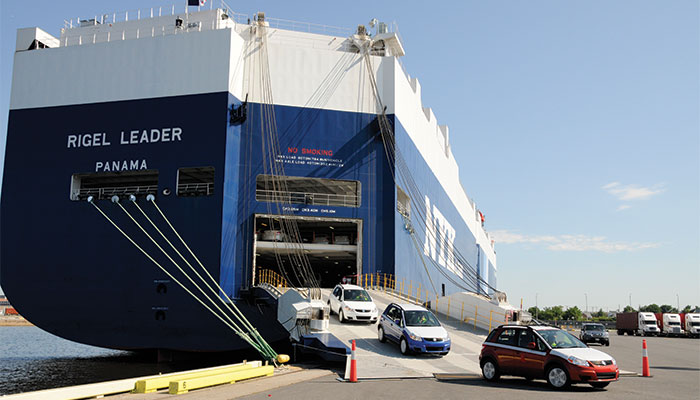

Today, thousands of Ro-Ro ships are in daily use around the world, with another historic milestone reached in 2008 when Auriga Leader – the world’s first partially solar-powered car carrier – made its maiden voyage.
Ro-Ro Shipping: Types of Vessel
As discussed, Ro-Ro shipping takes many forms, and accordingly many types of specialist Ro-Ro vessels are used. These include…
RoPax
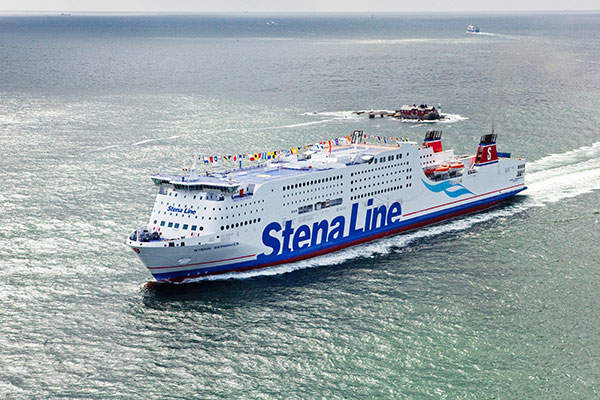

These are the kind of car ferries you might have been on for a day trip to France, with decks for transporting cars and others for carrying passengers. RoPax vessels with space for over 500 passengers are also often known as “cruise ferries”.
ConRo
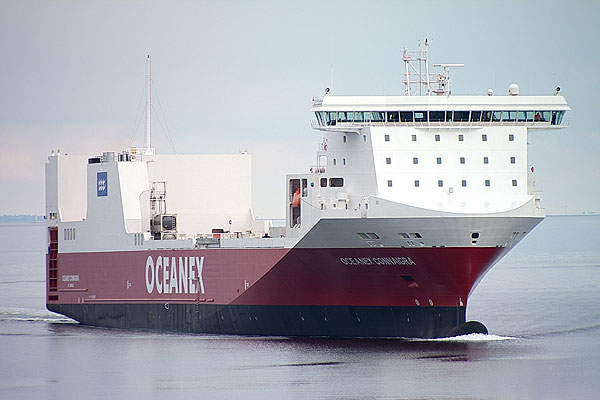

These are hybrid Ro-Ro/container vessels, with vehicles stored below decks and containers stored on deck.
LMSR
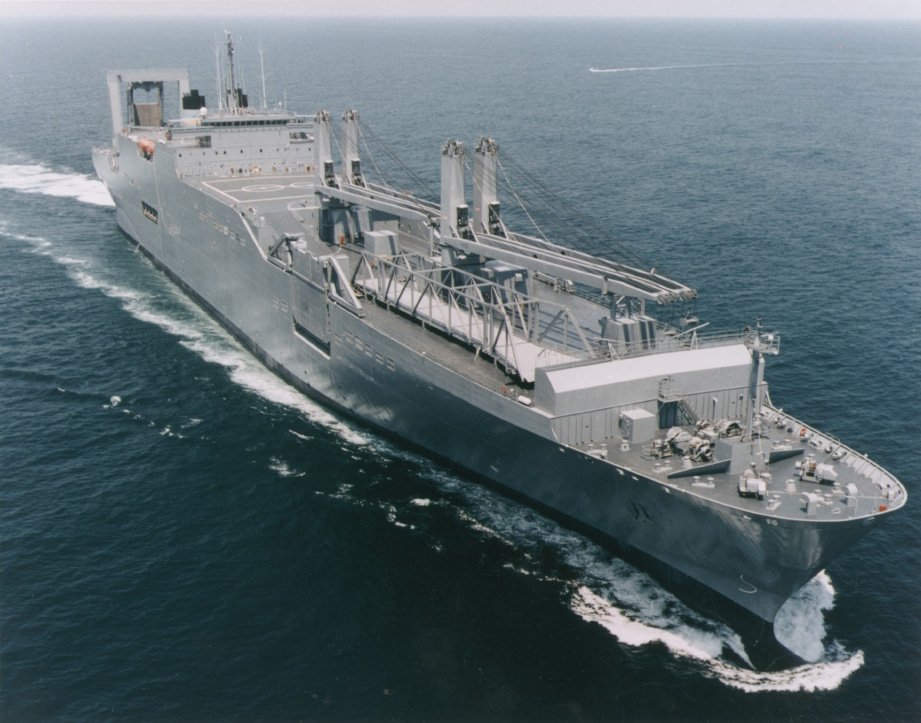

These are specialist Ro-Ro vessels used by the US military. The initials stand for ‘Large, Medium-Speed Roll-on, Roll-off’.
PCC and PCTC
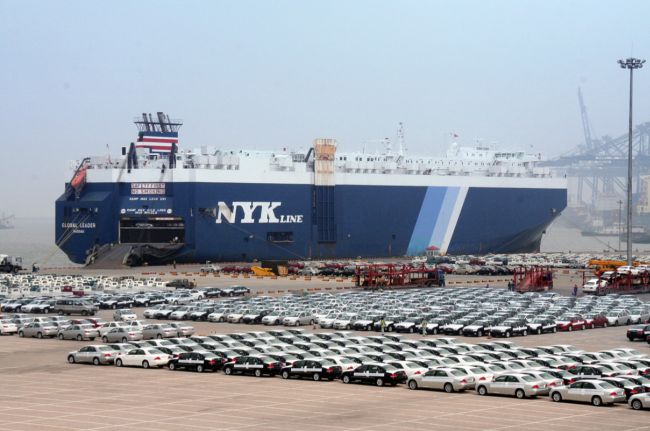

As described above. These are mostly used by automobile manufacturers to transport large numbers of vehicles and these are the vessels that will likely be used to transport your car if you decide to ship it via RoRo.
These vessels come in all sorts of sizes, but the biggest of them can be absolutely enormous!
How Many Cars Can a RoRo Ship Carry?
Currently, the largest RoPax ferry in operation (MS Color Magic), which is owned by Norwegian ferry company Color Line, can carry 550 cars at a time and has a gross tonnage of 75,100. But MS Color Magic is really a cruise ship that also carries cars, and so much of the space on board is dedicated to passenger comfort. By contrast, Ulysses, which runs between Holyhead and Dublin and is operated by Irish Ferries, has a gross tonnage of just 50,938, but can carry 1,342 cars at a time.
Even these titans are dwarfed, however, by modern PCCs. Norway’s Höegh Autoliners, for instance, operates a fleet of six PCCs, each of which can carry 8,500 cars.
Ro-Ro Car Shipping: What Are The Benefits?
Labour costs are hugely reduced as large teams of stevedores and longshoremen are not required to manhandle vehicles that can simply be driven on and off the boat. Loading and unloading times are also reduced, for the same reason. The tourist and travel industry has also benefited greatly from people being able to take their cars overseas – see the emergence of the “booze cruise”, for instance!
How Are Cars Loaded Onto Roro Ships?
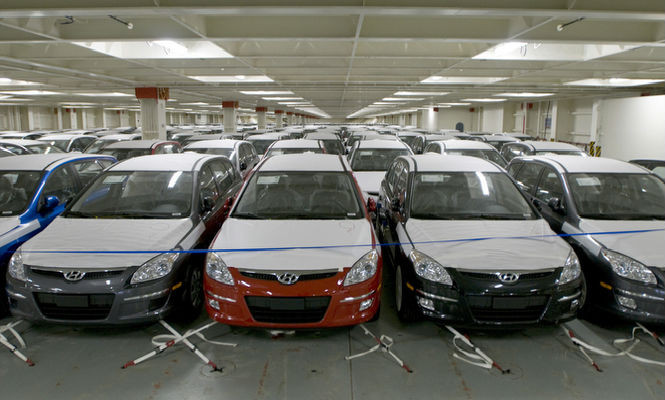

Today’s Ro-Ro vessels are technologically advanced ships that employ highly trained specialist staff to ensure vehicles are correctly stowed in the safest configuration and securely fastened in place. Cars are aligned nose-to-bumper and bow-to-stern, then securely lashed to the deck, using straps that go around the wheels and attach to eyelets in the deck itself.
Ro-Ro Shipping: Is it for you?
Finally, we come back to our original starting point: is Ro-Ro shipping the best way to move your vehicle?
We’ve already discussed the pros and cons of Ro-Ro shipping from the shippers’ point of view. From the point of view of the customer, though, the main advantages of Ro-Ro shipping are as follows:
It’s Easy
All you have to do is drive your car to the port of departure: there is no need to have us collect it several days in advance, as there would be if we were shipping your car inside a container (though we CAN still collect the car if you’d like us to).
It’s Cheap
Ro-Ro shipping almost always works out cheaper than using a container.
It’s Quick
Cars can often be transported using regular weekly services, which obviates the need to book space on a container ship.
It’s Versatile
All manner of vehicles can be transported on Ro-Ro ships: not just private cars but also buses, lorries, ambulances, tractors, diggers and so on. Most handlers will, in fact, have specialist deck areas set aside ready for just such cargoes. These may even have height-adjustable floors and ceilings, for maximum flexibility.
Finally, remember that using Ro-Ro car shipping services does require your vehicle to be capable of rolling on and off the ship in the first place! So if you’re shipping a classic car that doesn’t actually run, container shipping may be the way to go.
Contact Autoshippers today for a to ship your car overseas via RoRo or Container.


